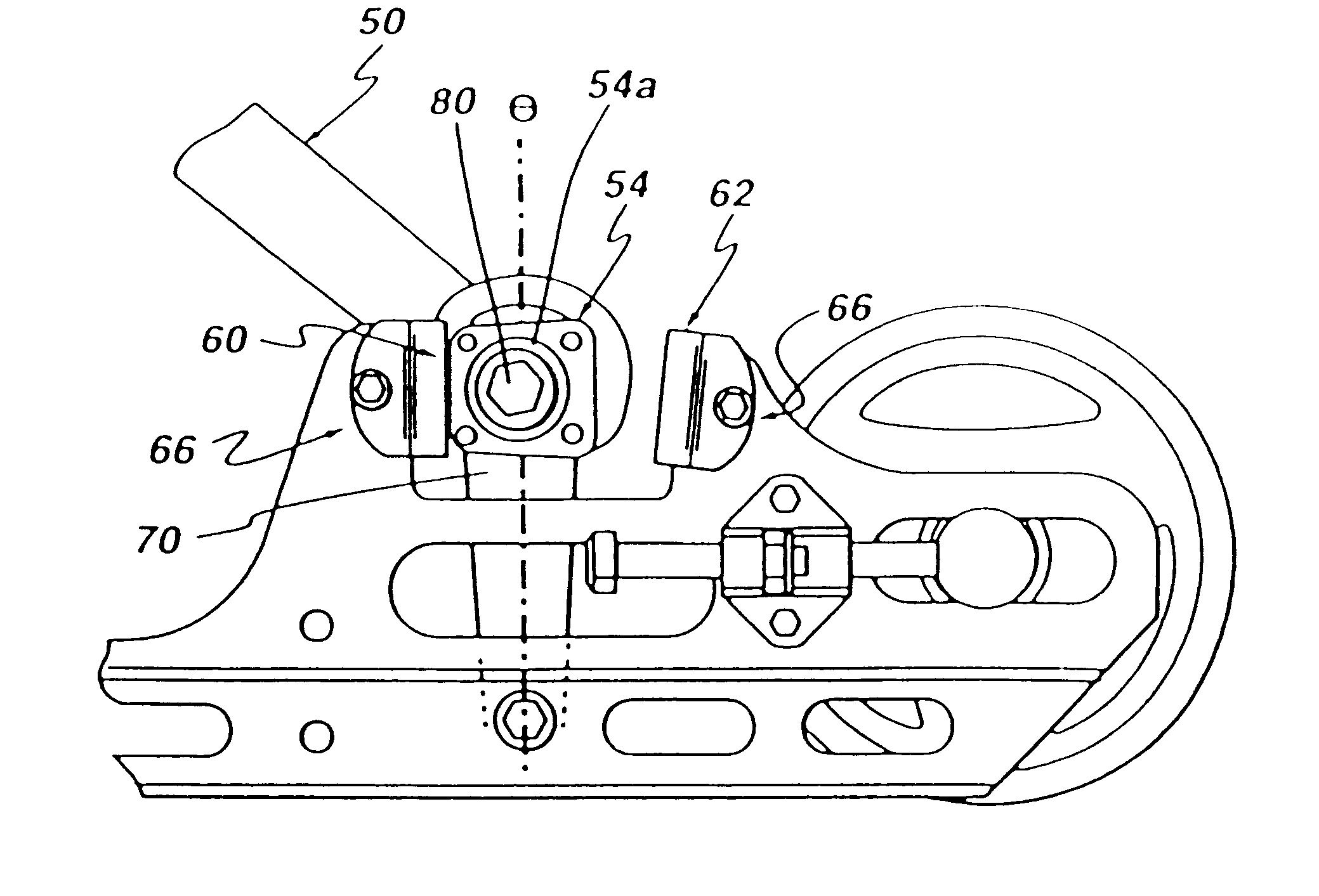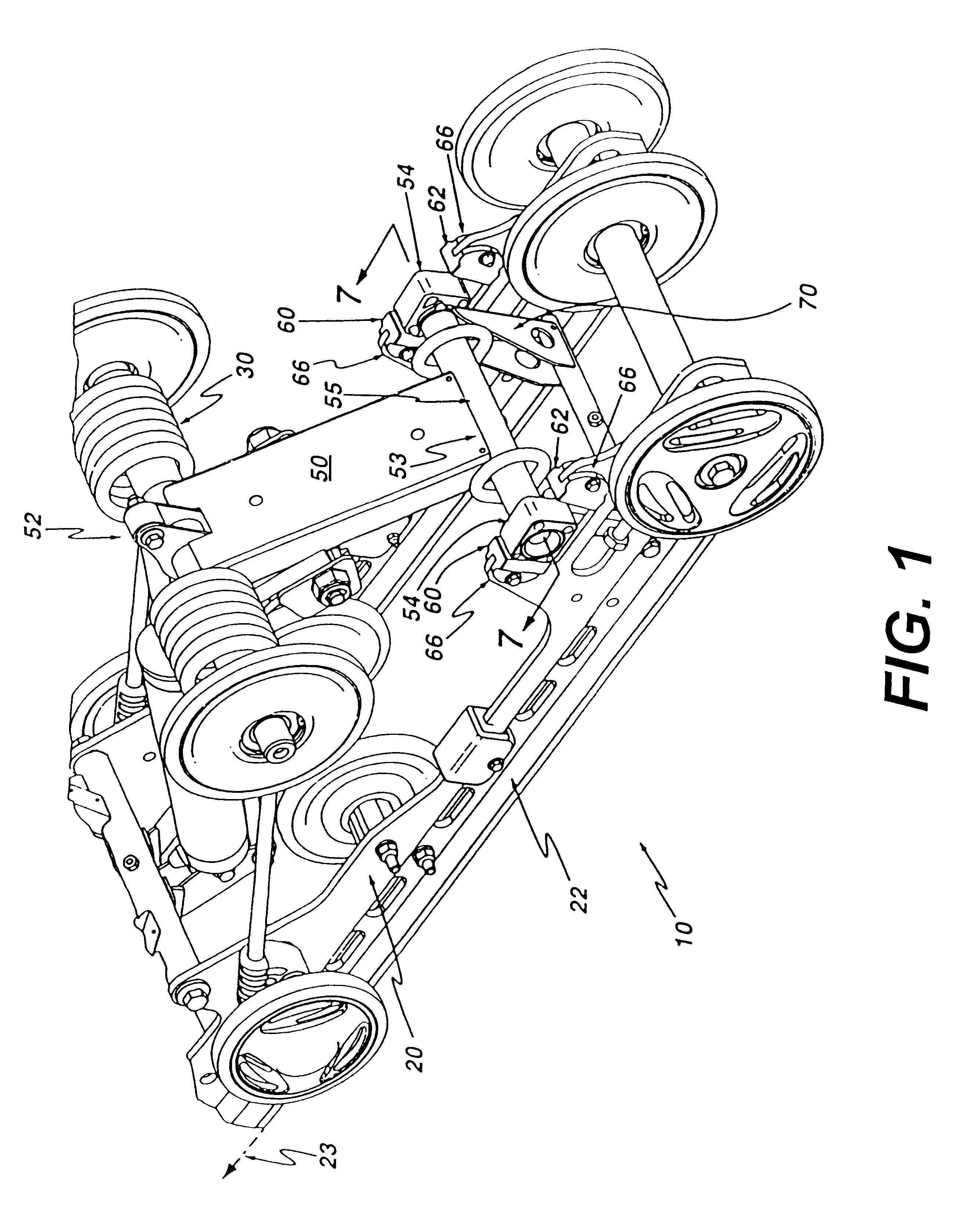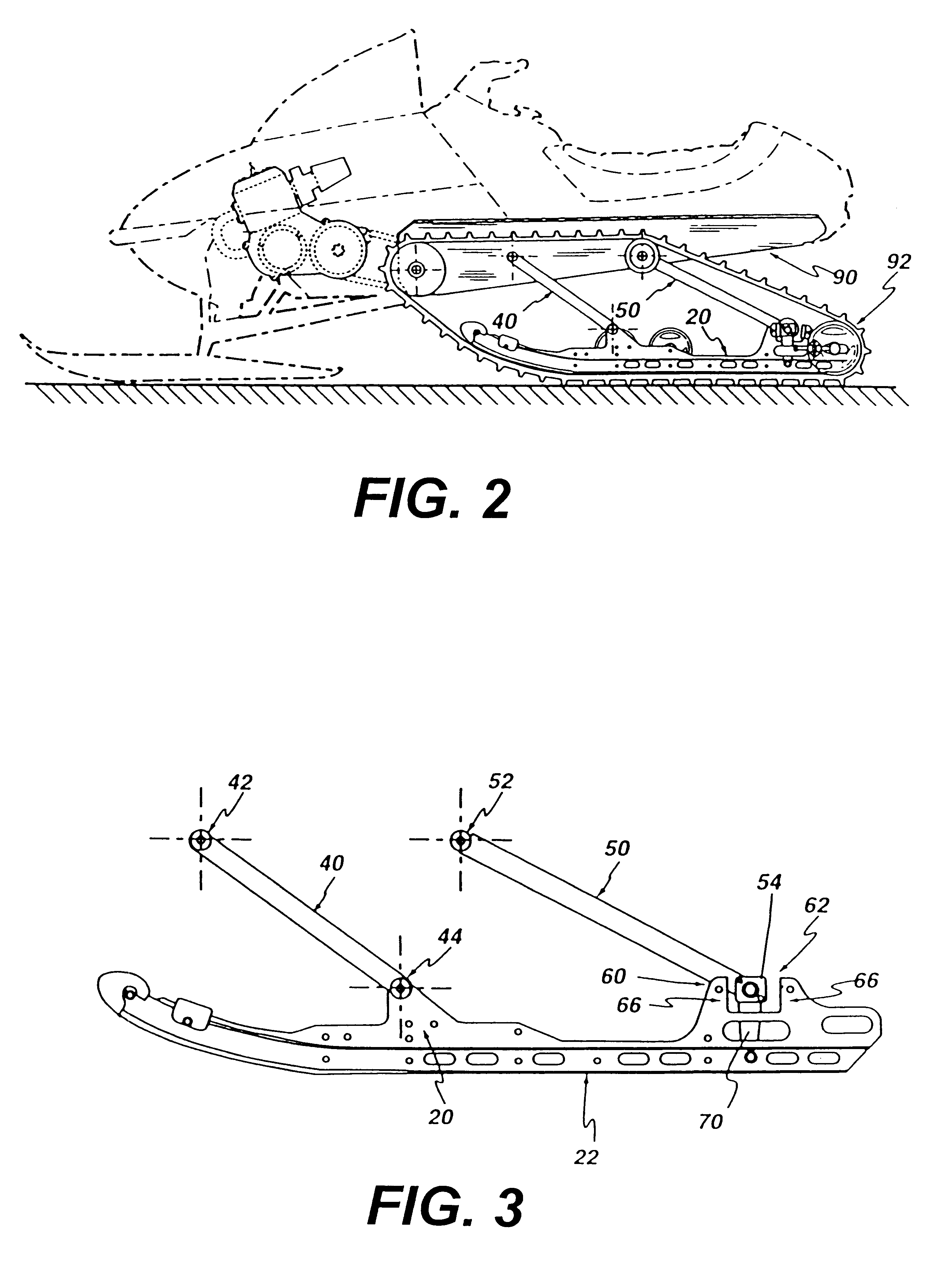Adjustable rear suspension for a tracked vehicle
a rear suspension and track suspension technology, applied in the direction of hand cart accessories, rider propulsion, hand carts, etc., can solve the problems of large force on the block, difficulty in rotating the adjuster block or removing it for maintenance and cleaning, and obvious drawbacks, etc., to achieve the effect of small shearing for
- Summary
- Abstract
- Description
- Claims
- Application Information
AI Technical Summary
Benefits of technology
Problems solved by technology
Method used
Image
Examples
Embodiment Construction
Referring to FIGS. 1, 2 and 3, an adjustable rear suspension system, designated comprehensively by the reference numeral 10, is used for mounting an endless track 92 to a chassis 90. The suspension system 10 comprises a slide frame 20, a front suspension arm assembly 40 and a rear suspension arm assembly 50. The slide frame 20 comprises a pair of parallel slide rails 22 which are maintained at a spaced apart relationship by at least one cross-brace, the slide rails defining a longitudinal direction 23. Also mounted to the slide frame are a plurality of wheels for engagement with the endless track 92. At least one spring-like member 30 is connected to the chassis 90 and the slide frame 20 so as to urge the slide frame 20 downwardly away from the chassis. The spring-like member 30 is preferably a linear, non-linear or torsional metallic spring and is advantageously coupled with a damper or shock absorber to attenuate vibrations.
The front suspension arm assembly 40 has an upper end 42 ...
PUM
 Login to View More
Login to View More Abstract
Description
Claims
Application Information
 Login to View More
Login to View More - R&D
- Intellectual Property
- Life Sciences
- Materials
- Tech Scout
- Unparalleled Data Quality
- Higher Quality Content
- 60% Fewer Hallucinations
Browse by: Latest US Patents, China's latest patents, Technical Efficacy Thesaurus, Application Domain, Technology Topic, Popular Technical Reports.
© 2025 PatSnap. All rights reserved.Legal|Privacy policy|Modern Slavery Act Transparency Statement|Sitemap|About US| Contact US: help@patsnap.com



